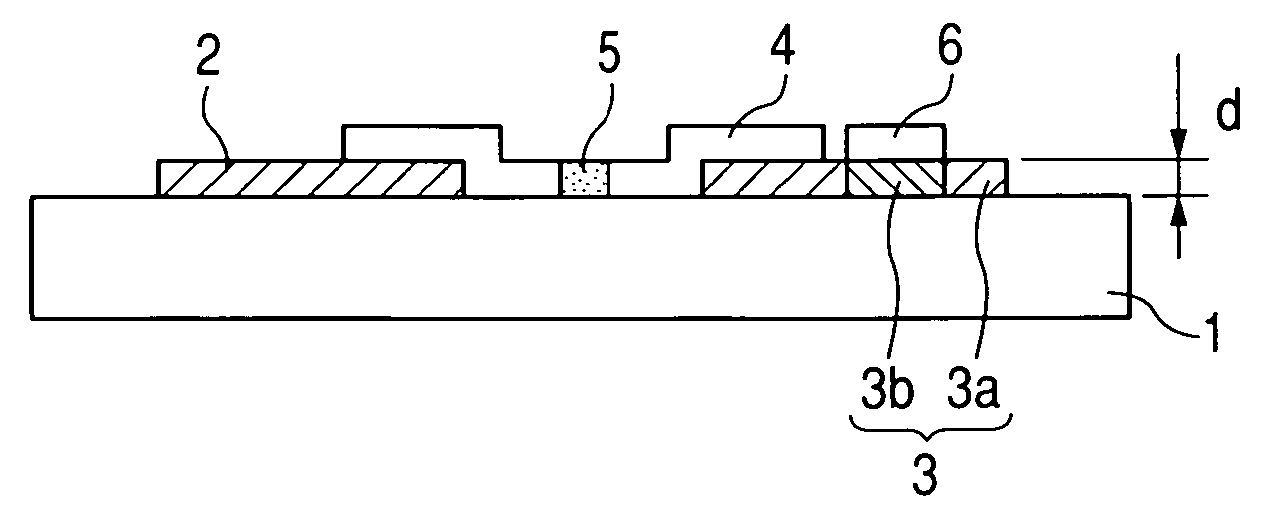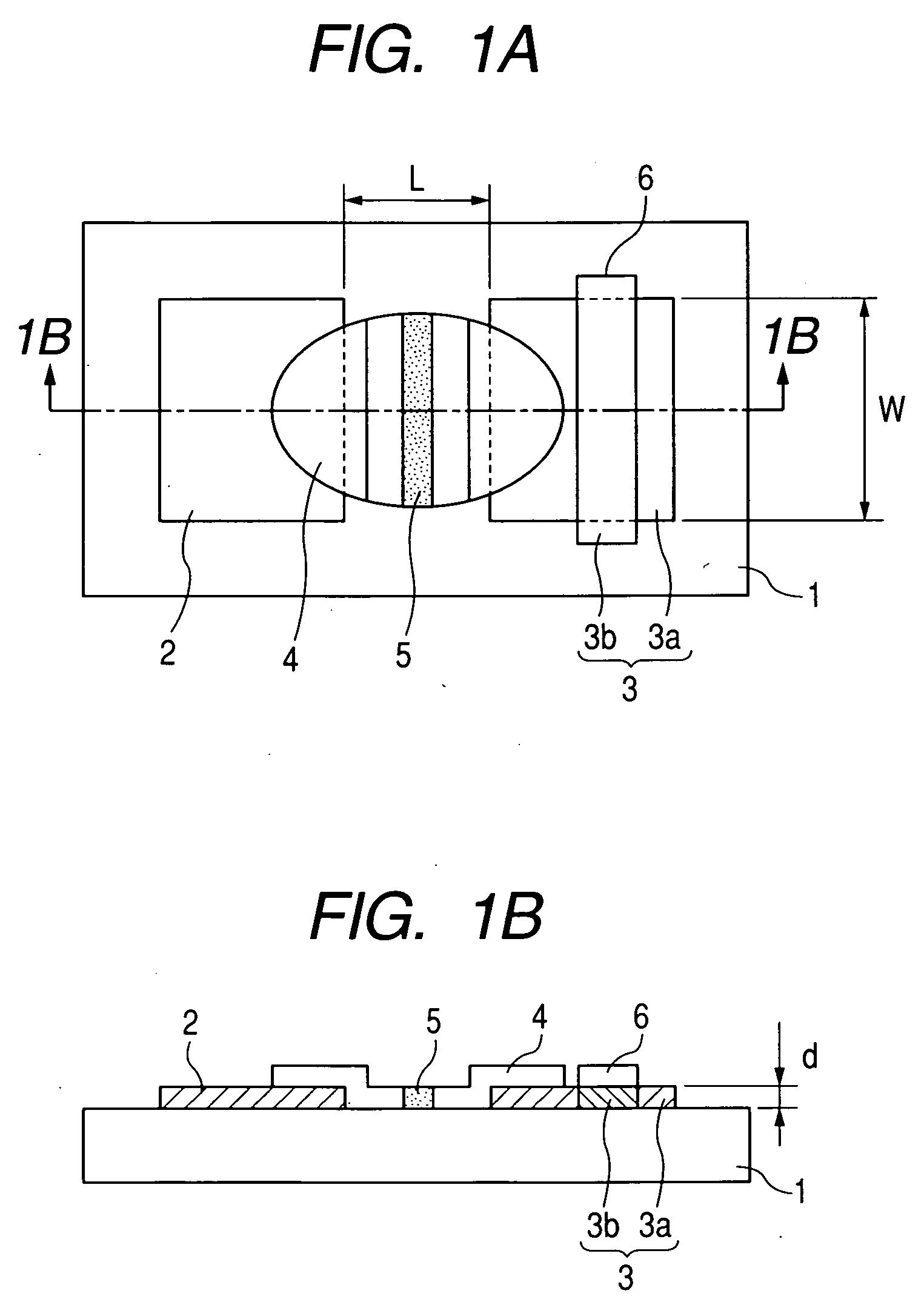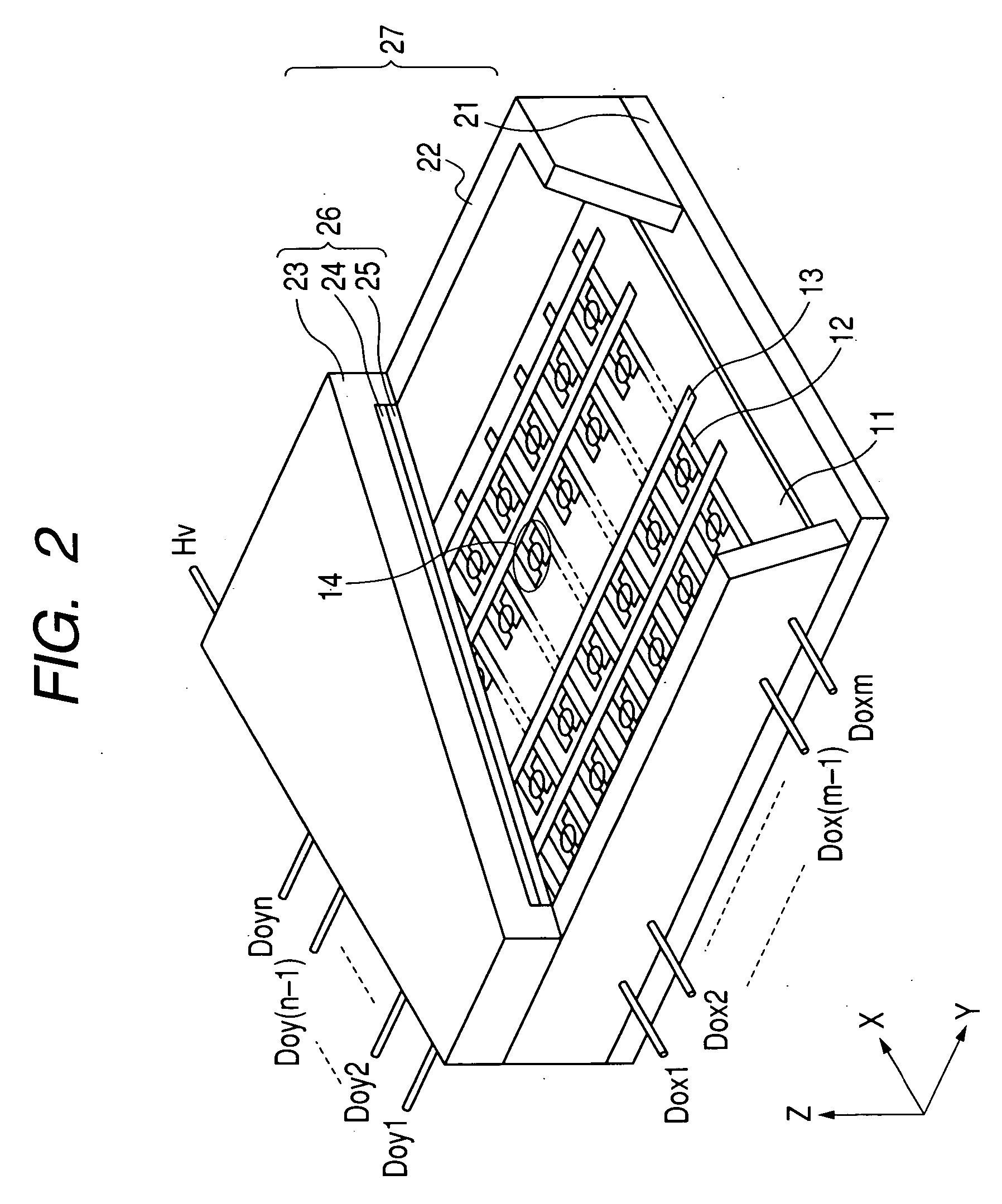Formation method of electroconductive pattern, and production method of electron-emitting device, electron source, and image display apparatus using this
- Summary
- Abstract
- Description
- Claims
- Application Information
AI Technical Summary
Benefits of technology
Problems solved by technology
Method used
Image
Examples
example 1
[0108] As a photosensitive resin, the coating liquid of a methacrylic acid-methyl methacrylate-ethyl acrylate-n-butyl acrylate-azobisisobutyronitrile polymer was applied to a glass substrate (75 mm high×75 mm wide ×2.8 mm thick) with a roll coater on the entire surface, and was dried for 2 minutes at 45° C. on a hot plate. Next, using a negative type photomask, with an extra-high pressure mercury lamp (illuminance: 8.0 mW / cm2) as a light source, the substrate and mask were contacted and were exposed for exposure time of 2 seconds. Next, using deionized water as a chemical developer, the substrate was processed for 30 seconds by dipping, and the resin pattern with film thickness of 1.35 μm was obtained.
[0109] After this resin pattern-formed substrate was soaked for 30 seconds into the deionized water, it was soaked in tris(2,2′-bipyridine)ruthenium(II) chloride aqueous solution (ruthenium content: 1 mass %) for 60 seconds.
[0110] Next, the substrate was pulled out, and was cleaned w...
example 2
[0114] Electrodes were produced similarly to the first example except using a tetraamminepalladium(II) acetate solution (palladium content: 1 mass %) as the metallic compound solution. The sheet resistance value of the metal palladium portion was 30 Ω / sq, and the sheet resistance value of the palladium oxide portion was 4.5 kΩ / sq.
example 3
[0115] While producing a plurality of surface conduction type electron-emitting devices using the formation method of an electroconductive pattern of the present invention, wiring for driving the plurality of surface conduction type electron-emitting devices was formed to produce an electron source, and an image display device was further produced using this electron source. Hereafter, production procedure will be described on the basis of FIGS. 2 to 8.
[0116] [Step 1]
[0117] On the glass substrates 11 with 300 mm wide ×300 mm long ×2.8 mm thick, ruthenium oxide electrodes were formed as the device electrodes 2 and 3 by the same method as the first example (FIG. 3).
[0118] In this example, the device electrode 3 with 60 μm wide and 480 μm long, and the device electrode 2 with 120 μm wide and 200 μm long were made so as to face each other at the inter-electrode gap of 20 μm. In addition, a pitch between the device electrodes 2 and 3 was made 300 μm in a cross direction and 650 μm in l...
PUM
 Login to View More
Login to View More Abstract
Description
Claims
Application Information
 Login to View More
Login to View More - R&D
- Intellectual Property
- Life Sciences
- Materials
- Tech Scout
- Unparalleled Data Quality
- Higher Quality Content
- 60% Fewer Hallucinations
Browse by: Latest US Patents, China's latest patents, Technical Efficacy Thesaurus, Application Domain, Technology Topic, Popular Technical Reports.
© 2025 PatSnap. All rights reserved.Legal|Privacy policy|Modern Slavery Act Transparency Statement|Sitemap|About US| Contact US: help@patsnap.com



